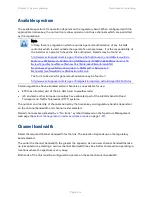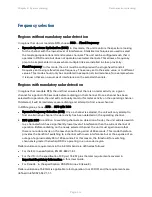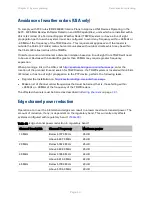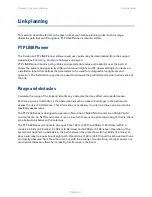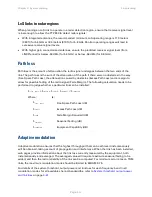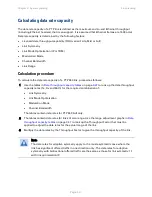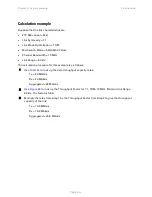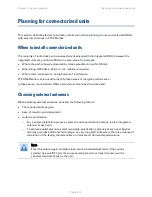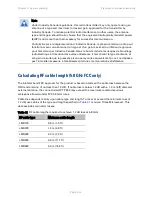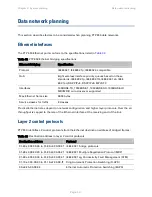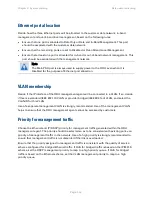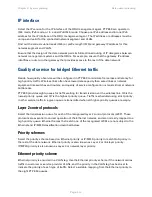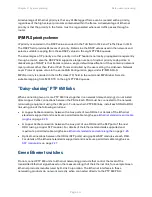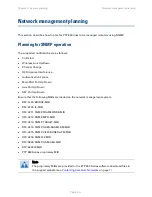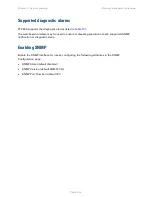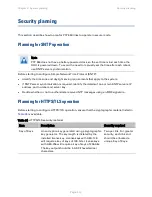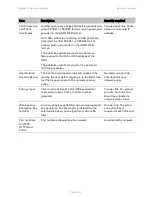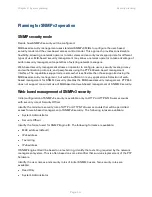
Chapter 3: System planning
Radio spectrum planning
Avoidance of weather radars (USA only)
To comply with FCC rules (KDB 443999: Interim Plans to Approve UNII Devices Operating in the
5470 - 5725 MHz Band with Radar Detection and DFS Capabilities), units which are installed within
35 km (22 miles) of a Terminal Doppler Weather Radar (TDWR) system (or have a line of sight
propagation path to such a system) must be configured to avoid any frequency 30 MHz or
–30 MHz of the frequency of the TDWR device.
This requirement applies even if the master is
outside the 35 km (22 miles) radius but communicates with outdoor clients which may be within
the 35 km (22 miles) radius of the TDWRs.
If interference is not eliminated, a distance limitation based on line-of-sight from TDWR will need
to be used. Devices with bandwidths greater than 20 MHz may require greater frequency
separation.
When planning a link in the USA, visit
http://spectrumbridge.com/udia/home.aspx
, enter the
location of the planned link and search for TDWR radars. If a TDWR system is located within 35 km
(22 miles) or has line of sight propagation to the PTP device, perform the following tasks:
•
http://spectrumbridge.com/udia/home.aspx
•
Make a list of channel center frequencies that must be barred, that is, those falling within
+30 MHz or –30 MHz of the frequency of the TDWR radars.
The affected channels must be barred as described in
Edge channel power reduction
Operation at or near the 5.8 GHz band edges can result in a lower maximum transmit power. The
amount of reduction, if any, is dependent on the regulatory band. This currently only affects
systems configured with regulatory band 1 (
).
Table 30 Edge channel power reduction in regulatory band 1
Channel Bandwidth
Channel Frequency
Maximum power
10 MHz
Below 5737.0 MHz
25 dB
Above 5837.0 MHz
25 dB
20 MHz
Below 5742.0 MHz
25 dB
Above 5832.0 MHz
25 dB
40 MHz
Below 5765.0 MHz
24 dB
Above 5810.0 MHz
24 dB
45 MHz
Below 5778.0 MHz
23 dB
Above 5795.0 MHz
23 dB
Page
3-20













